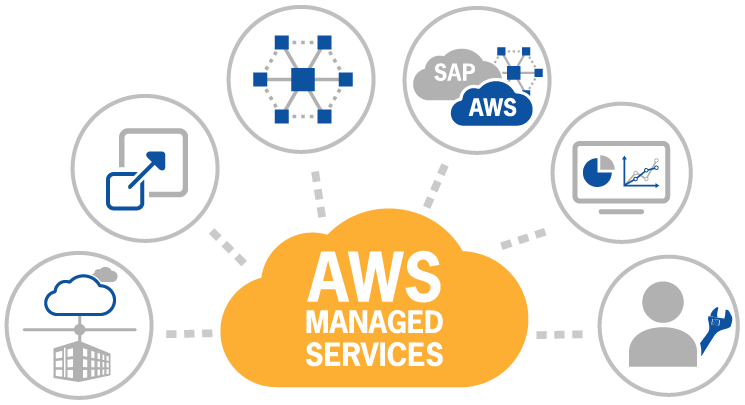The rapid evolution of cloud computing has transformed the way businesses operate, enabling them to scale, innovate, and stay competitive in an ever-changing digital landscape. Amazon Web Services (AWS), a leading cloud services provider, offers a comprehensive suite of managed cloud services to simplify infrastructure management and optimize resource utilization. In this article, we will delve into AWS Managed Cloud Services, exploring their key features, benefits, and how they contribute to operational efficiency.

I. Understanding AWS Managed Cloud Services:
Definition and Overview:
AWS Managed Cloud Services refer to a set of offerings that offload the burden of infrastructure management, allowing businesses to focus on core competencies.
Core Components:
Explore the various AWS Managed Cloud Services, including but not limited to AWS Managed Services (AMS), AWS Lambda, AWS Fargate, and AWS Elastic Beanstalk.
II. Key Features of AWS Managed Cloud Services:
Automated Provisioning:
Discuss how AWS Managed Cloud Services automate resource provisioning, reducing manual intervention and minimizing the risk of errors.
Scalability and Flexibility:
Highlight the scalability of AWS services, enabling businesses to seamlessly adjust resources based on demand fluctuations.
Security and Compliance:
Explore the built-in data security features of AWS Managed Cloud Services, emphasizing their compliance with industry standards and regulations.
Monitoring and Analytics:
Discuss the robust monitoring and analytics tools integrated into AWS Managed Cloud Services for real-time insights into system performance and usage.
III. Benefits of AWS Managed Cloud Services:
Cost Optimization:
Analyze how AWS Managed Cloud Services contribute to cost savings by efficiently utilizing resources and offering pay-as-you-go pricing models.
Enhanced Reliability:
Explore how AWS services, such as AWS Lambda and Amazon RDS, enhance reliability by automatically managing underlying infrastructure, reducing downtime.
Time-to-Market Acceleration:
Discuss how the streamlined operations of AWS Managed Cloud Services enable businesses to bring products and services to market faster, gaining a competitive edge.
Resource Optimization:
Highlight how AWS Managed Cloud Services optimize resource allocation, ensuring optimal performance without overprovisioning.
IV. Use Cases and Case Studies:
Enterprise Adoption:
Explore how enterprises across various industries have successfully adopted AWS Managed Cloud Services to streamline their operations.
Startups and SMBs:
Discuss how startups and small to medium-sized businesses benefit from the agility and cost-effectiveness of AWS Managed Cloud Services.
V. Challenges and Considerations:
Data Migration and Integration:
Address challenges related to data migration and integration when adopting AWS Managed Cloud Services.
Training and Skill Gaps:
Discuss the importance of training and addressing skill gaps to effectively leverage AWS Managed Cloud Services.
VI. Future Trends and Innovations:
Serverless Computing:
Explore the growing trend of serverless computing and its impact on the future development of AWS Managed Cloud Services.
AI and Machine Learning Integration:
Discuss how the integration of AI and machine learning capabilities into AWS Managed Cloud Services is shaping the future of cloud computing.
Conclusion:
As businesses continue to navigate the complex landscape of cloud computing, AWS Managed Cloud Services emerge as a key facilitator, providing a robust foundation for streamlined operations. By automating tasks, optimizing resources, and enhancing security, these services empower organizations to focus on innovation and growth in an increasingly competitive digital environment.